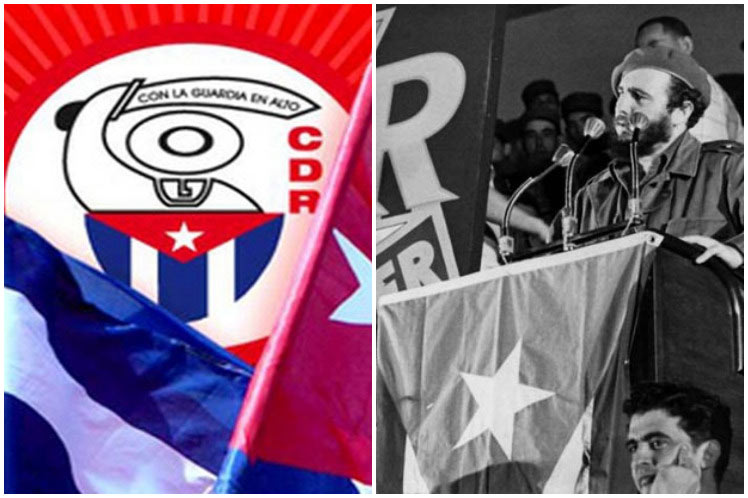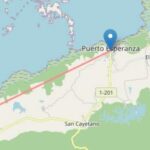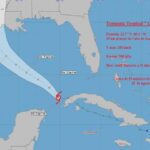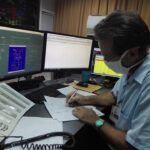It was September 28, 1960 in the old Presidential Palace of Cuba, when several explosions interrupted the speech of the revolutionary leader Fidel Castro, the night that the largest mass organization in the country was born.
In the now Museum of the Revolution, the welcoming ceremony of the then prime minister took place, who was returning from participating in the XV Period of Sessions of the United Nations General Assembly in the United States, Prensa Latina publishes.
About a million people listened to the leader’s words; and suddenly, the deafening sound of explosions changed the turn of the speech.
‘Let’s establish a collective revolutionary surveillance system!’ was Fidel Castro’s proposal to those who remained there, and immediately afterwards the notes of the National Anthem were heard, in what constituted the effervescent preamble to the creation that day of the Committees for the Defense of the Revolution (CDR).
The context could not be more complex: the aggressiveness of the US government against the Cuban Revolution increased with constant attacks on the nation, which ranged from bacteriological wars and discrediting campaigns, to terrorist acts and the armed aggression at Playa Girón in 1961, for only mention some examples.
The historian Ventura Carballido, dedicated to studying the emergence and development of the CDRs, says that the proposal arose as a spontaneous event, and only two days after the events in the Presidential Palace, the historical leader would reaffirm the creation of the cederista organization in intervention through the CMQ station.
Immediately, the movement that first emerged in blocks and buildings spread to all the provinces of the country, and began the organization of its different structures.
Witness of those events, Reimundo Quesada describes to Prensa Latina the founding years and “the actions of the groups that tried to sabotage the economy, create riots and endanger the physical integrity of the leaders.”
The university professor reviewed crucial moments in the history of the organization, among them the fight against bandits (1959-1965) in the mountainous areas of Escambray, where the enemy gangs of the nascent Revolution took refuge, and committed from murders to all kinds of vexations against the peasants.
The vigilance in the neighborhoods at that time fulfilled the role assigned to it by Fidel Castro in his constitution, of being a rearguard in the fight against saboteurs and terrorists, said Quesada, while recognizing ‘the multiple social activities for the development of the community, such as blood donations and productive activities. ‘
The also doctor of Sciences recalled that the CDRs were protagonists in different mass marches, including the one carried out for the return of the child Elián González, who was held in the United States for seven months without the consent of his father, and returned to Cuba after a battle fought by the people in the streets and squares of the Antillean island.
For her part, Professor Bárbara Valdés participated in the organization of the campaign that in 1961 made the Caribbean nation the first country in Latin America to free itself from illiteracy, and evokes the work of the mass organization in the ‘mobilization home for home, exhorting people who wanted to learn or literate.’
She keeps in her memory the work of the CDR together with the Cuban Women Federation to achieve full access to study and work for women, as well as a fundamental link in the protection of citizens and the economy during the passage of events climatological, next to the Civil Defense.
‘The CDRs have been present in the most important events in the social and political life of this country, Valdés insists, before also pointing to the population and housing censuses, voluntary work, the country’s institutionalization processes and the conformation of the organs of People’s Power.
Both interviewees highlighted the accompaniment of the Ministry of Public Health in the various health and vaccination campaigns in the country, including the most recent one, which has led to more than eight million Cubans at least the first dose of the immunogen created here against the SARS virus. -CoV-2, the cause of Covid-19.
Likewise, they highlighted the work currently carried out by CDRs in vulnerable neighborhoods and communities together with ministries and student organizations, to respond to citizens’ problems and achieve a transformation that encompasses schools, health institutions, roads, infrastructures. hydraulic and housing.
“Today more than ever the work of the CDRs takes effect, with renewed methods in correspondence with the new forms of aggression that the United States uses against the island, such as the unconventional war,” said Quesada, and his words are the obvious allusion to the current challenges of a decisive organization, six decades later, for the time of Cuba.





